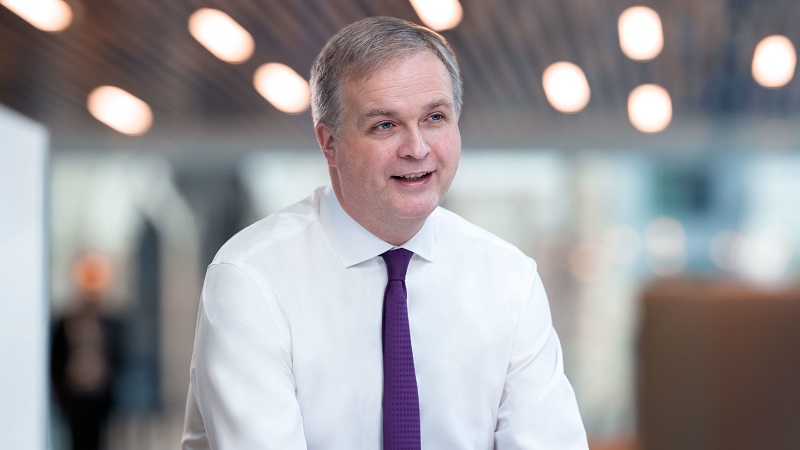Despite the impact of the Covid crisis on financial markets, the regulator remains intent on Libor ceasing to exist after the end of 2021, but according to the Investment Association the buyside is making good progress in moving to Sonia, the new risk-free rate.
Libor has been the subject of a number of scandals in recent years and the regulator has said the rate is not supported by transaction data, is judgement-based and presents potential for manipulation.
The Financial Policy Committee stated in its Financial Stability Report published in December last year that the “continued reliance of global financial markets on Libor poses a risk to financial stability that can only be reduced through a transition to alternative risk-free rates by end 2021”.
Then in February this year the Financial Conduct Authority head of asset management supervision Nick Miller followed this up with a ‘Dear CEO’ letter which told fund groups in no uncertain terms they must cease using Libor-linked investments and fee structures.
“We expect your firm to take all reasonable steps to ensure the end of Libor does not lead to markets being disrupted or harm to consumers, and to support industry initiatives to ensure a smooth transition,” he said.
“Firms, such as yours, in the asset management sector, should be in no doubt that they have a responsibility to facilitate and contribute to an orderly end to Libor.”
GBI2 founder Graham Bentley notes how Libor has been ubiquitous in its use for everything from benchmarking to calculating what the risk-free rate is, how assets are valued, what accounting standards are used, as well as being the basis of a huge number of fixed income contracts such as floating rate notes.
“It’s hugely important in terms of what it is and what it’s for and as a consequence, making a change is clearly going to impact not only those people that have to affect the change but clients and everybody else who uses some sort of risk-free rate as a reference point.”
Asset managers progressing well on transition
All regulated firms are expected to produce a board-approved transition plan and define senior manager accountability for the switch and despite Covid, a recent survey by the Investment Association and EY found the buyside is progressing well on this path.
It said progress was particularly impressive in the derivatives space, where there has already been a significant uptake of Sonia-based contracts. But in asset classes such as bonds and loans, the transition is taking longer.
By the end of last year, 92% of all firms had assessed their exposure to Libor while 70% had reduced exposure. Some 65% had invested in Sonia-based instruments in 2019, the survey of IA members representing £5.3trn of assets found.
IA director for investment and capital markets Galina Dimitrova says: “Investment managers have made significant progress in the transition away from Libor to Sonia and other alternative reference rates. With the FCA and Bank of England clear that Libor will cease to exist after the end of 2021, we strongly encourage investment managers, counterparties and vendors to work together in this final stretch to ensure a smooth transition, and reduce the reliance on Libor in all investments, operations and activities.”
Fund managers using Sonia to their advantage
Bentley notes one of the key differences between Sonia and Libor is that because the former is based on experienced interest rates and payouts rather than an estimated rate, it doesn’t incorporate liquidity risk and credit risk which means a spread needs to be priced in for products which use Sonia as a benchmark.
He explains: “If you saw a Sonia rate compared to a Libor rate that has been calculated at the same time, the Sonia rate would be less than the Libor rate. Now, that straight off gives you a clue as to how a fund management group or similar could use Sonia to their advantage in the sense of saying, ‘Well it’s lower so it’s an easier target to beat’.
“So, what they’ll have to do is determine a spread over and above Sonia which reflects that credit risk or their assumption about credit risk. So it’s then a question of how do you determine what that spread is?
“As a result, telling somebody you’re going to beat the risk-free rate is not enough because you are taking some risks to do it. So, how am I compensated for the risks that I’m taking?”
Inflation-plus is preferred measure for absolute return
Some absolute return funds have traditionally used Libor-plus as a benchmark but Sanlam fund manager Mike Pinggera prefers an inflation-plus 4% benchmark for his Multi-strategy fund.
He says when these type of vehicles were originated essentially they were looking for an equity-like return over a full cycle but managers have since been asked by regulators to put concrete number around the end return.
“It was never designed for that and that is one of the real challenges: fund managers have to deliver and regulators have to monitor it. It is very difficult and I don’t know the answer to it.”
Pinggera says these reference points for fund performance, whether Sonia, Libor CPI or RPI-plus, were only ever designed to give an indication as to the direction of travel and it can be challenging to put performance in a static box because markets don’t behave that way.
“I’ve asked our biggest investors and the feedback is inflation is what we are expecting you to do, inflation-plus is the wishlist, so that is a realistic target,” he adds. “At the very least if you are looking to keep pace, inflation is the target but what we actually do is do better than that.”
Pinggera says it is therefore vital that everyone invested in the fund understands what managers are trying to do with their money.
“We understand why sectors and regulators want one size to fit everybody and we are duty bound the adhere to rules that are set, but take a step back and talk to end clients… in most cases it is someone’s retirement wealth they are asking us to look after.”











